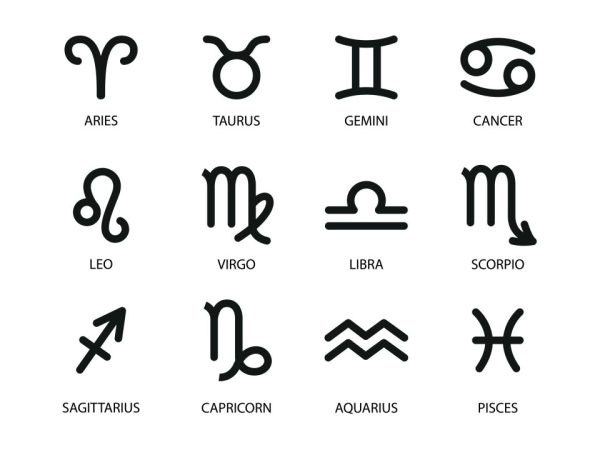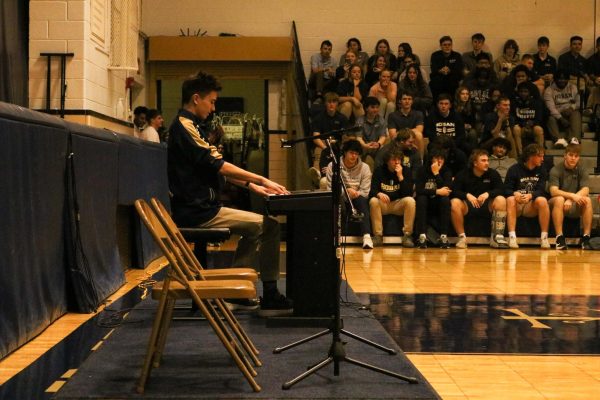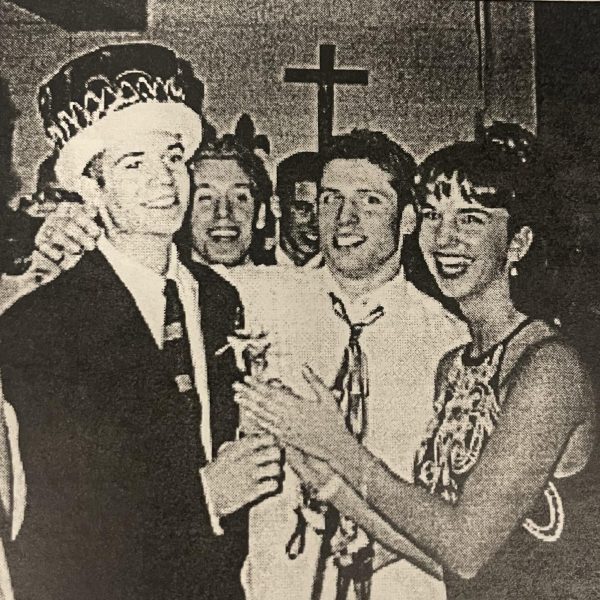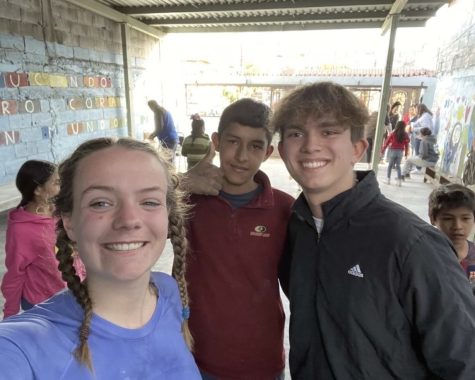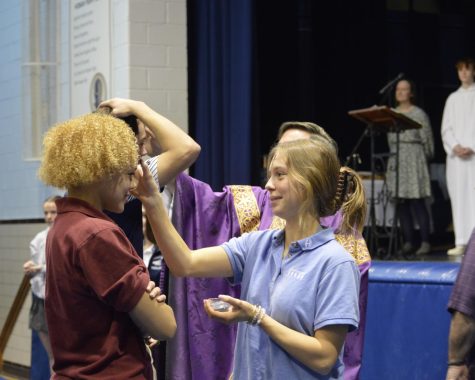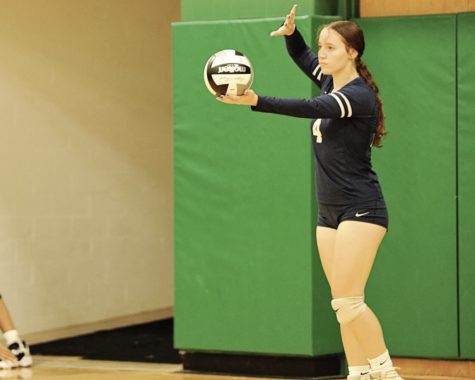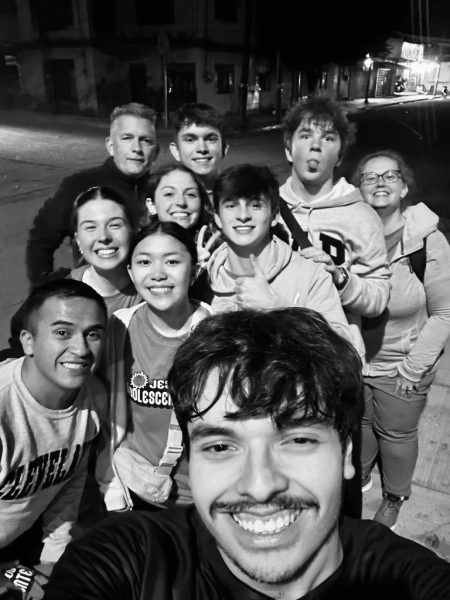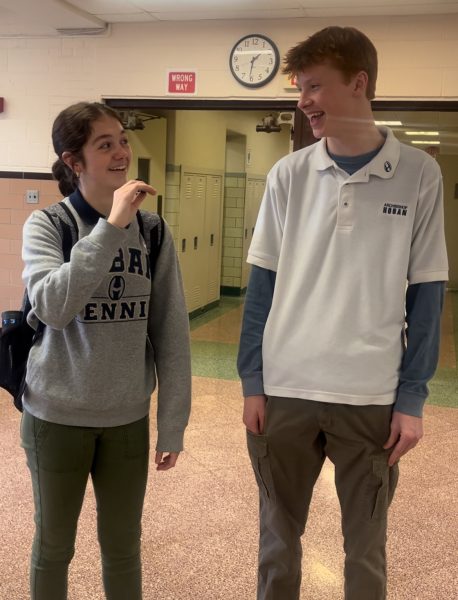Hoban seniors dig up history
Thirteen Archeology seniors squeezed and packed themselves into a Hoban van last October as they eagerly awaited an educational Mount Vernon excursion. Yet, little did they know that their shovels would soon strike gold…or, perhaps more specifically, a 6,000 year old rock.
Like a well-oiled machine, Mr. Anderson wisely divvied up tasks for each student and created a smooth-running assembly line during their dig. And, knee-deep in the ground of George Washington’s estate, dirt-covered Emma Tecca, Lexi Talmage and Savannah Kargel covered ‘troweling’ duty. Troweling entails intricately hand-excavating the test pit with a small shovel, a tedious task for these rookie archeologists.
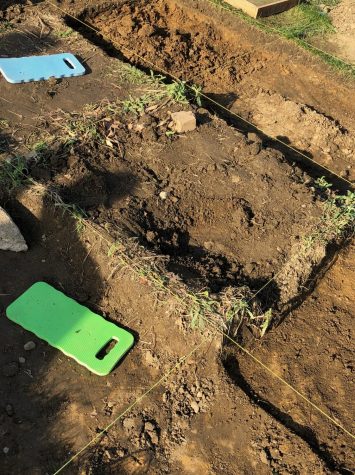
“This allowed for us to identify different layers of the soil and discover certain features,” Talmage said. “Justin Icsman and Mike Bee would dig while Tecca, Kargel and I would come in to trowel. We would scrape along the bottom and then screen it into the wheelbarrow.”
“It was pretty monotonous business and we weren’t seeing anything interesting, so we decided to dig a little deeper,” Tecca said. “And that’s when we dug up the treasure.”
Treasure indeed. In fact, 6,000-year old treasure.
“I just pulled out this big rock and said ‘Hey Tecca, look at this big rock’ and Tecca just said ‘Oh cool, put it in the screening bucket,” Kargel said.
The three had been digging up big rocks all day, but none quite as large and formed. Tecca, Kargel and Talmage figured it could potentially be sifted and then further examined in the lab, thus placing it in the screening bucket rather than dismissing it.
Carrying the loot over to the next station, the sifting station, the three handed off the pigskin to Dominic Anderson and Jared Phillips. Anderson and Phillips then noticed the unique shape of this rock and therefore called over the Mount Vernon archeologists nearby to investigate.
“At first, we [Anderson and Phillips] just thought it was yet another potato-looking rock,” Phillips said. “But our intuition told us that this particular rock was different. Whether it was the proportion or just the blunt edges, I couldn’t tell you…it just felt different in my hands.”
“They claimed it was the best thing they’ve found in two years,” Icsman said. “We were shocked. We knew it was something, but after all, it really just looked like a rock.”
But because of this curiosity and diligence shown by Hoban students, the archeologists took the rock to further test it and on Wednesday Oct. 31, the facts rolled in full glory.
The supposed ‘rock’ is said to be a stone ax from about 60 centuries ago. Most likely left behind by Native Americans who migrated by boat on the Potomac River nearby, this ax would have been a key possession during travels–this was a major discovery. The approximate length was found too–seven inches long–and was formed out of a nonviolent, but wood-cutting material, called “green stone.”
All of this detailed information, brought by our very own Hoban seniors.
This not only proves the seriousness of the archeology work Hoban students perform, but the Holy Cross values that translate into student lives. These fourteen archeology seniors demonstrated an intense zeal in Mount Vernon and strove to reach excellence in every dig.
“It’s so cool that we were the first people to touch the ax since 6,000 years,” Kargel said. “Imagine, the last person to handle it was a Native American and I got to share a small moment with them. It’s mind-blowing.”
“It was definitely a turning point in our trip,” Tecca said. “We were receiving the recognition we deserved for our hard work down there. Every one of us. And it’s special, because we made history…and we’re just some kids from Akron.”

